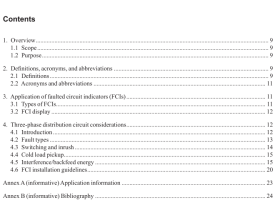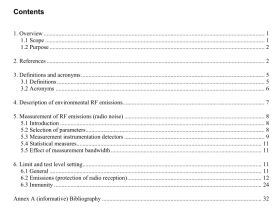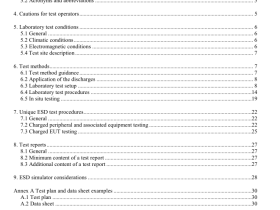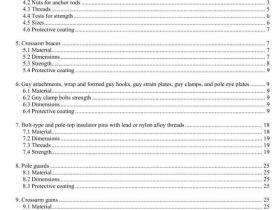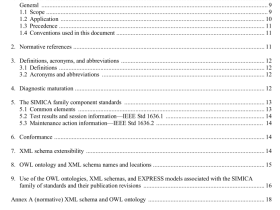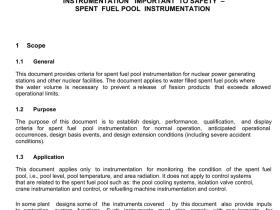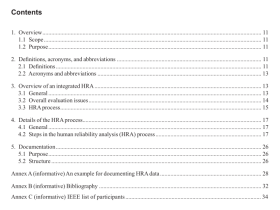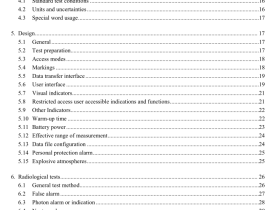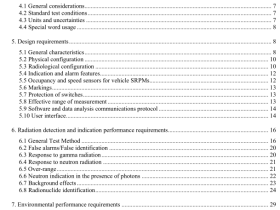IEEE Std 1680.1a pdf download
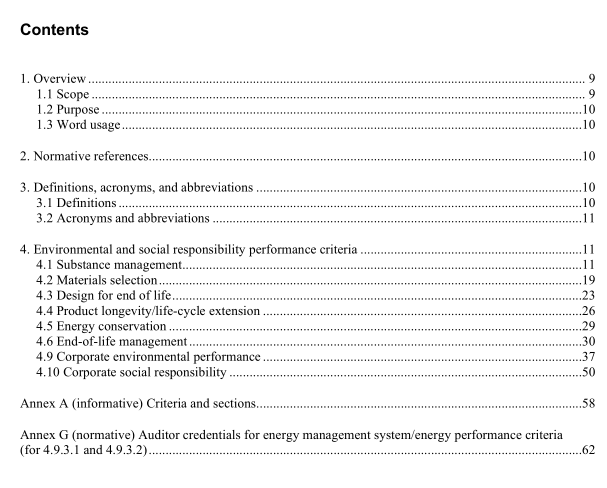
IEEE Std 1680.1a pdf download IEEE Standard for Environmental and Social Responsibility Assessment of Computers and Displays Amendment 1: Editorial and Technical Corrections and Clarifications
c)Supplier letter(s) indicating which reduction approach(es) was used to achieve the performance in Tabie 4. Supplier letter(s) shall also include one or more of the following (based on whichreduction approach(es) is usedy:
l)lf calculating the 90%F-GHG emission reduction, the supplier letter(s) shall include all of the following:
i)A description of the procedures or processes used to achieve the results from the most recent calendar or fiscal year,including how tools using reduction approaches a), b), orc) were excluded from the calculation, if applicable,
i) The percentage of F-GHG emissions avoided,
ili)The calculation used to achieve 90% reduction; baseline emissions shall be calculated
based on the most recent fab, industry average, or company records (e.g., gas purchaserecords) available prior to when the alternative gas,equipment,and/or process wasemployed (see Annex B for example equations).
2) lf excluding manufacturing tools and ancillary equipment from the calculation by using one or more reduction approaches a), b), or c), supplier shall demonstrate that all excluded tools andequipment are equipped as defined below, based on the reduction approach(es) used:
i)lf abatement equipment is used to achieve this criterion, a statement certifying that the abatement equipment meets the following requirements:
For U.S. EPA Greenhouse Gas Reporting Rule,Subpart 1, the abatementequipment has been installed, maintained, and operated in accordance with the sitemaintenance plan for abatement systems that is developed and maintained inrecords as specified in 98.97(d)(9).
For IPCCTier 2a,2b,or 3 methodology,the abatement equipment is anycombination of electrically heated,fuelled-combustion,plasma,and/or catalyticdevices that are specifically designed to abate F-GHGs and are used within themanufacturer’s specified process window and in accordance with specifiedmaintenance schedules. Also,the DREs of these abatement devices have beenmeasured and confirmed under actual process conditions,using a technicallysound protocol,which accounts for known measurement errors including,forexample, CF4 by-product formation during CFo abatement as well as the effect ofdilution, the use of oxygen, or both, in combustion abatement systems.
ii)lf gases with a GwP of 2300 or less are used toward the achievement of this criterion,the supplier letter(s) shall include the following information:
The percentage of the impacted manufacturing and ancillary operation tools thatare using gases with a GWP of 2300 or less.
Demonstration that the GwP of the gas(es) is less than 2300 (e.g.,in peerreviewed literature,IPCC assessment report).
Demonstration that when accounting for byproduct emissions and gas utilizationrate, the total emissions on a COze basis,from using a gas with a GWP of 2300 orless,are 90%less compared to total emissions (accounting for byproductemissions and gas utilization rate) when using SF6 for the same production. Thismay be demonstrated through,for example,measured and documented emissionfactors and by product formation factors.
ii) If supplier utilizes NFs remote plasma for CVD chamber clean toward the achievement
of this criterion (in combination with other reduction methods),the supplier letter(s)shall include the following information:
-The percentage of impacted CVD chamber cleaning process tools that are using
NF3 remote plasma clean. If not all chamber clean process tools are using NF3 remote plasma clean, demonstration that all other chamber clean process tools areusing another reduction method (i.c., have emission reduction technology installedor are using gases with a GWP of 2300 or less).
Declaration that NFs remote plasma clean processes are being used in accordancewith manufacturer specifications (e.g., flow rates). If deviations occur fromspecifications, the declaration should include an indication as to why.
Additional details:
F-GHGs are SF6,NFs,perfluorocarbons (PFCs), and hydrofluorocarbons (HFCs).Examples of PFCs andHFCs include, but are not limited to, CF4,CFe,CsFR, c-CaFR,CFsO,CHF3, and CH Fz.
Process Optimization is adjusting a process so as to improve a specified set of parameters (e.g., when flatpanel display suppliers use less F-GHGs or use F-GHGs more efficiently in the manufacturing process).
Equations for emission reduction with abatement calculation and altermative gas calculation are provided inAnnex B.
4.1.10.2 Optional—Reduce fluorinated greenhouse gas emissions from semiconductorproduction
Replace the text, table, and equations of 4.1.10.2 with the following:
Corporate criterion: Manufacturer shall meet the requirements of Part A for one point, and both Part Aand Part B for two points total. The scope of Part A and Part B of this criterion shall include all 300 mmprocess semiconductor manufacturing facilities (fabs) that produce semiconductor components (e.g.,CPUs,DRAM, accelerators) in products declared to conform to this standard for the manufacturer, from 75% ofall the manufacturer’s semiconductor component suppliers, by annual spend (fiscal or calendar) for thoseproducts. Supplier may include other semiconductor components; requirements may be met at the supplierievel,fab level, or for the portion of the fab used in products declared to conform to this standard for themanufacturer.
